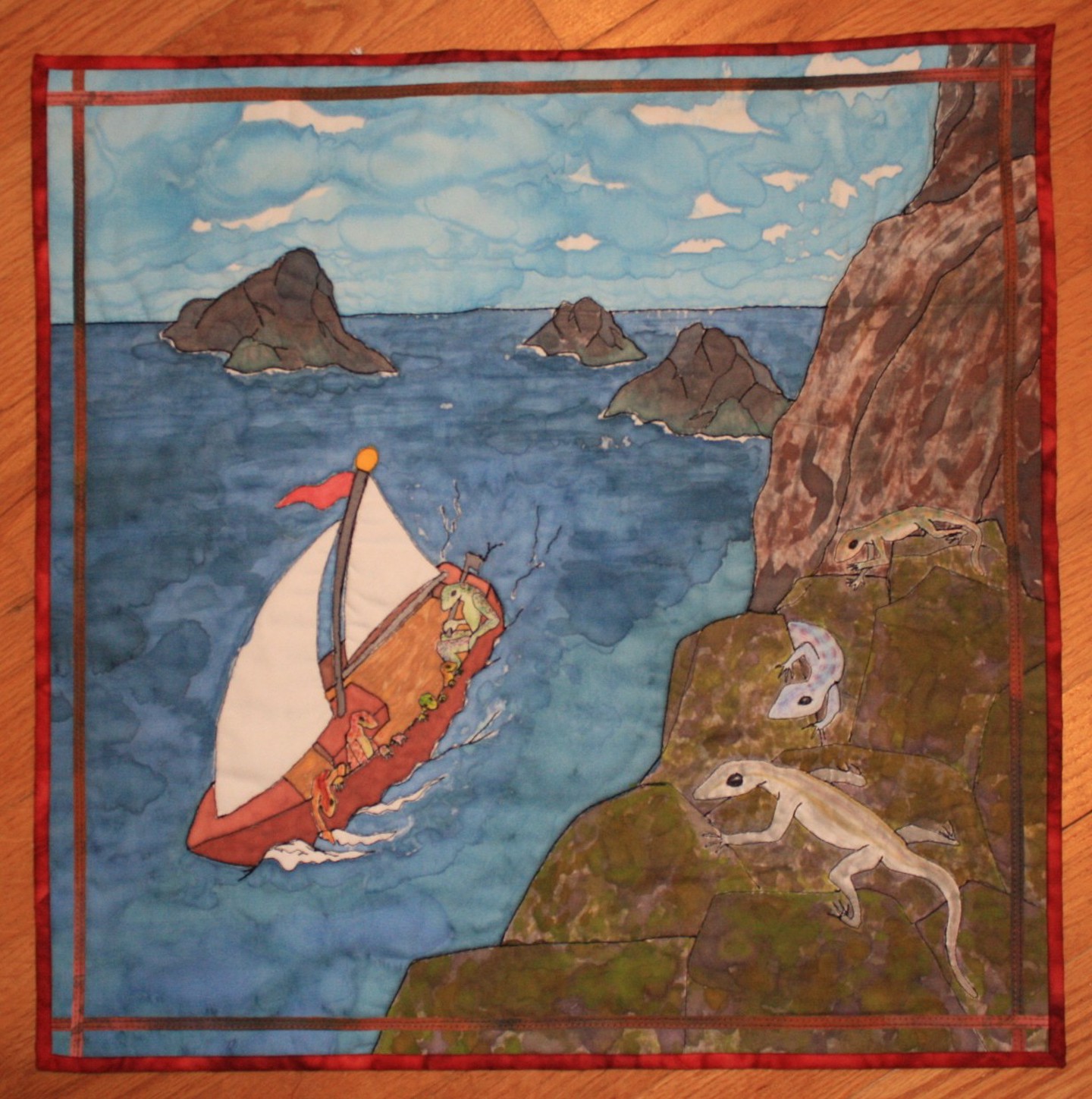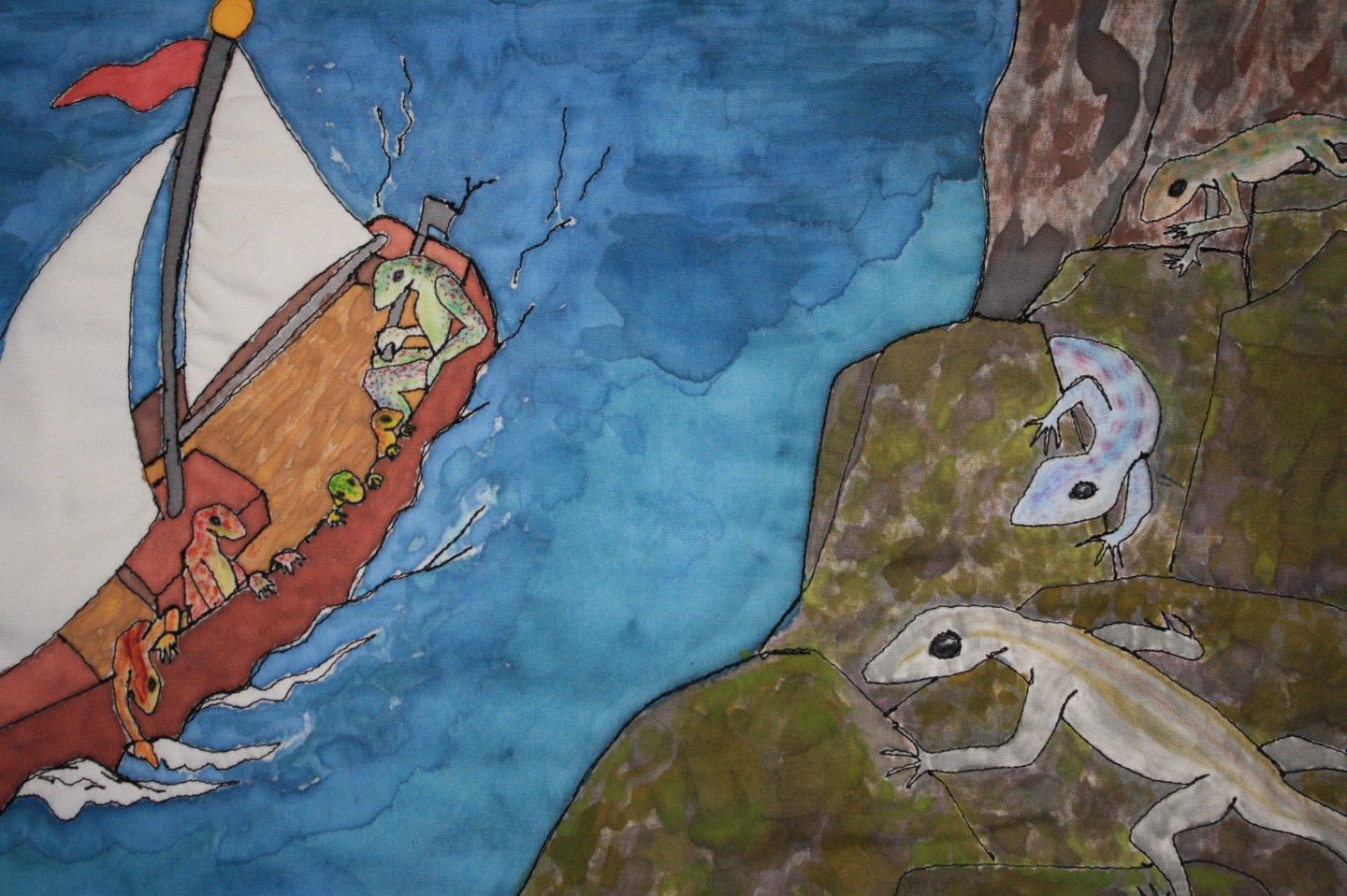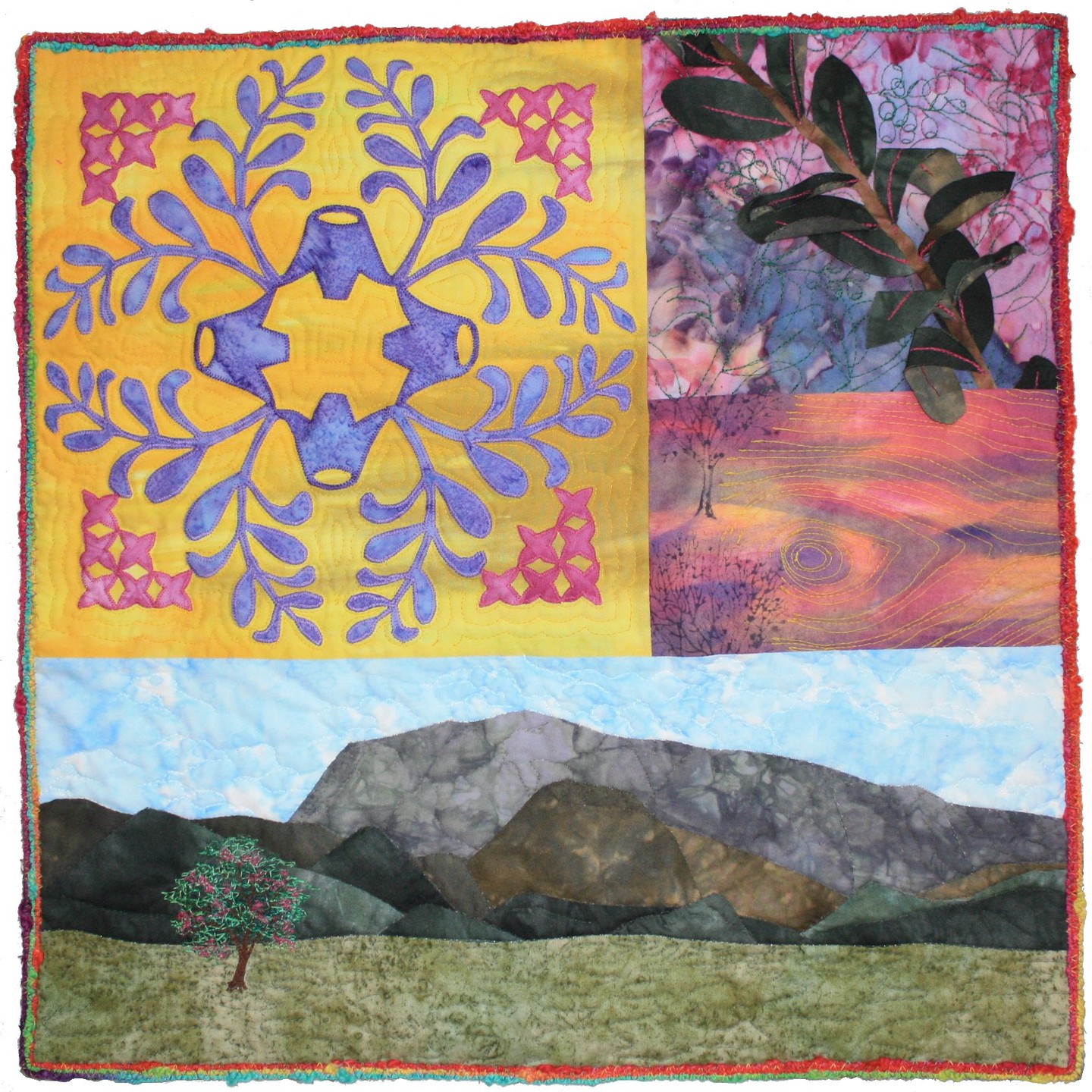The National Parks Centennial Quilts Project - 177 quilts about the flora, fauna, and landscapes of the National Parks - was headed by Donna DeSoto. Such a fun opportunity, so I contributed two! Each quilt in the project is a landscape, flora, or fauna from a U.S. National Park.
Each one is 20 x 20 inches. See the website for more. A book is also available, with color photographs of every quilt and explanatory text: “Inspired by the National Parks: Their Landscapes and Wildlife in Fabric Perspectives.”
Channel Islands: Island Night Lizard

Night Lizards
On Santa Barbara Island, in the Channel Islands National Park, lives a curious little creature called the Island Night Lizard. Despite its name, it is most active mid-day and not at all at night. It gives birth to live young, unlike most other reptiles which lay eggs. They grow slowly and can live to age twenty-five. Also unusual is that their color and pattern is highly variable: mottled, plain, blotched, striped, broken stripes, ocellated, and finely mottled. While considered a threatened species, due to habitat alteration in the Park and predation by alien species, the Island Night Lizard is not likely to go extinct. What an intriguing little animal. What a sadness if it were not part of our world.
In honor of such a peculiar character, my quilt is an unconventional scene of a vacationing night lizard family being watched by natives in their habitat of lichen-covered rocks. It is a peculiar technique for me – a whole-cloth painted quilt. While I enjoy making landscape art quilts, normally they are heavily thread-painted.
$250
- cotton fabric (whole cloth), inks, fabric markers, colored pencils; cotton threads; binding is commercial cotton
- machine quilted, painted (with inks), colored with markers and pencils

detail
Haleakala: Iliahi (Sandalwood)

Sandalwood
There are many species of sandalwood around the Pacific. For time out of mind, mainly because of its lovely fragrance, many cultures utilized the wood or its oil – particularly in religious rituals – for incense, medicines, architecture, and carvings. Hawaiians named their sandalwood the Iliahi.
When I researched the flora of Haleakala, I was attracted to this tree because of the beautifully complementary colors of its red blossoms and large green leaves. Further investigation dismayed me: the economic and ecological havoc the iliahi trade caused Hawaii, beginning around 1790. Within twenty years it was their major export. Hawaiians were displaced from agriculture and fishing in order to provide labor for harvesting the wood. When it became scarce, they would even set fire in the forests to locate stands of the remaining trees, from its sweet smell as it burned. By 1830, the iliahi had all but disappeared from forests and the Hawaiian economy collapsed. Today, the iliahi grows high on Maui’s less-accessible volcanic slopes, particularly on Haleakala.
My quilt shows various aspects of the iliahi, including the wood grain, and dimensional leaves with the fruit shown in the quilting. A lonely survivor is imagined with the Haleakala volcano looming in the distance. Honoring traditional Hawaiian quilting, I developed a design of the leaves and blossoms – but are those volcanic craters, or stumps?
$250
- cotton fabrics, hand-painted, purchased hand-dyed and commercial; hand-dyed (purchased) yarn in border; cotton and nylon threads
- machine pieced, appliqued and quilted; some fusing